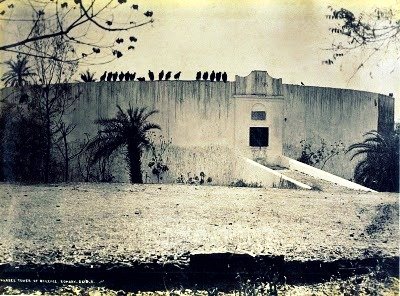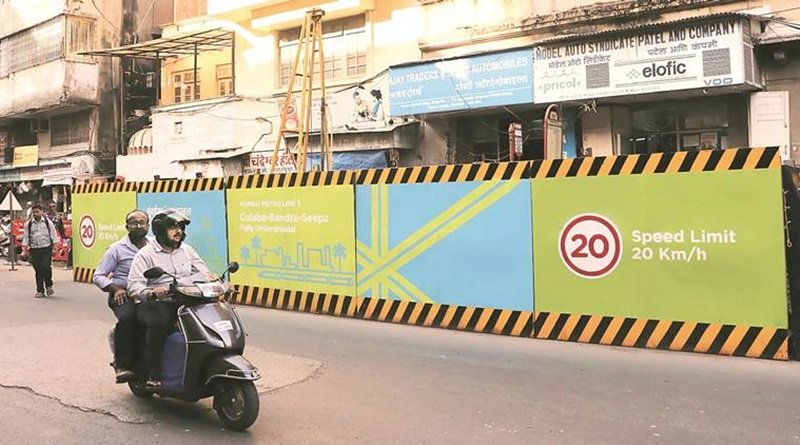NAVSARI ARAMGAH CONTROVERSY
Our community recently seems to be going through one controversy after another.
First we had the BPP board Trustees reverting to being a divided lot due to minority Trustees supporting the withdrawal of resignation of Mr. Muncherjee Cama so that he can resume functioning as a Trustee for his remainder term of 18 months.
Then we had the public spat between two leading Parsi industrialist families – Ratan Tata and Cyrus Mistry of Shapoorjee Pallonjee lineage and then to cap it we had the Wadia family head honcho Nusli Wadia also being dragged into the dispute. Finally culminating in having a non-Parsi for the first time as Chairman of Tata Sons – Mr. Natarajan Chandrasekaran, the present head of TCS.
Not that the Doongerwadi heritage walk controversy was not enough, now we have another religious controversy in Navsari.
The Navsari Samast Anjuman passed a very controversial Resolution on 8th January, 2017 for setting up an Aramgah near the Dokhmas on the sacred Doongerwadi land of Navsari. An Aramgah is a burial ground for the departed. When the news of the proposed meeting was announced, the electronic media went viral with pro and anti-messages going all over.
All the five High Priests gave their unequivocal objection to such a proposal advocating that Dokhmenashini is the only mode of disposal of a Zoroastrians body. This is in concurrence with the majority view of our community, as well as the orthodox and the staunch orthodox.
However, disregarding and disrespecting the High Priests objections, the Trustees of the Navsari Anjuman went ahead with their meeting and with a motley attendance crowd of just around 160 out of the 2000 plus Parsi population of Navsari taking part, the Aramgah proposal was approved by 156 members present and voting.
It is said that ladies cannot be members of the Samast Anjuman and hence they were not allowed to be present or vote, even though large number of women wanted to exercise this right. It is unthinkable that in today’s time and age when man and woman are being treated as equals everywhere, Navsari still has this dogma against ladies.
Without going into the alleged goondagiri at the meeting, it can safely be said that Navsari Trustees both Yazdi Kasad and Dara Deboo are highly respected residents of Navsari as also Jimmy Bacha who has been recently appointed by the Federation of Anjumans of India in place of the venerable Sohrab Katpitya to safe guard the defunct Anjumans properties. A few in the crowd may have caused the commotion but all cannot be branded as hooligans. In fact Yazdi Kasad is the contractor who has constructed three ownership towers for Parsi occupation and ownership in prime area of Linskui, Navsari for the BPP.
Coming now to the critical analysis of the Aramgah proposal, one will have to admit that the Trustees of BPP were the ones indirectly responsible for today’s bravado in Navsari. As one will recall when the Reformists wanted to set up a crematorium or at least a prayer hall for those opting for cremation at the Mumbai Doongerwadi, the then Trustees rightly rejected their demand on ground that the Trust Deed of Doongerwadi specifically laid down its user only for Dokhmenashini system and no other. The High Priests also supported this stand of the Trustees and things would have died down. But the Orthodox unfortunately kept on urging the Liberals to buy their own land and construct their own crematorium as they were all filthy rich and powerful..
Dinshaw Tamboly took up the proposal for a Parsi centric crematorium and since last year we have the Prayer Hall Trust at Worli offering its services to Parsis who want an alternate method of disposal of their dead bodies. No one, neither a single High Priest nor the orthodox elements came out to oppose its formation or continuation, but were in fact grateful that now Doongerwadi is safe .
Taking a cue from Mumbai, some of the Navsari residents, again have opted for an alternate mode of disposal of their corpses, but this time through the Aramgah route.
Since religion is private to a person, the mode of disposal is also private to that individual who has the right to decide how his body will be disposed. There is no doubt that Dokhmenashini, mandated by our religion, is the best form of disposal and hence Doongerwadi can have no other method of disposal. In Pune as well as in Banglore there are the Dokhmas and separately a distance away also Aramgah burial grounds. Where there are no Dokhmas, it is accepted by all including the High Priests that Aramgah is the proper mode of disposal but crematorium is a big NO-NO from the High priests.
The governing principle is that on Doongerwadi lands there can be no other mode of disposal. The Navsari Doongerwadi lands has to be restricted only to disposal by Dokhmenashini as the Trust Deeds would so specify as at that time 100-200 years ago there was no other mode even remotely considered by those Parsis. If the proposed Aramgah is not on Doongerwadi lands of Navsari but at a distance from it on private lands then unfortunately the orthodox will be unable to stop it and have to accept it since the precedent of the Prayer Hall at Mumbai is already there.
It is therefore important for the residents of Navsari to investigate where the Aramgah will be proposed and if it is on any part of their Doongerwadi land then it can be stopped. But if it is on separate private independent land, not connected with their Doongerwadi lands then one will have to live with it just as Mumbai Parsis are living with the Prayer Hall in Mumbai.





